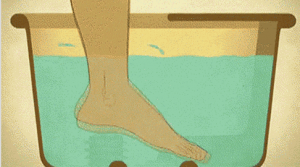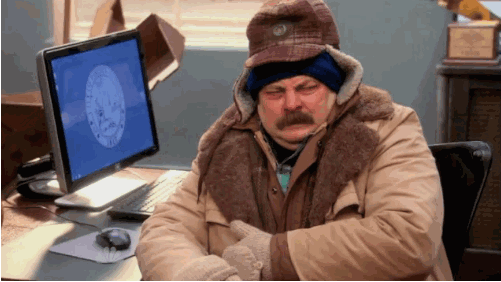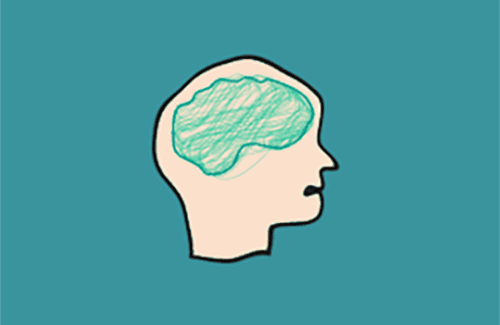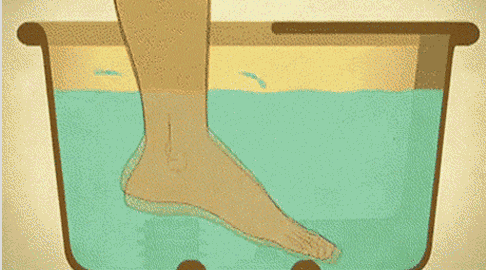
When the weather is cold every year, some people always enter winter early:
Others are still wearing coats, those who are afraid of the cold have wrapped their down jackets; others are still drinking warm water, and those who are afraid of the cold have already picked up the thermos.

Why are some people more afraid of the cold?
The operation of each system of the human body requires energy. Energy comes from the dynamic effects of food, basic metabolism and activities. Therefore, in a healthy state, people are more afraid of cold when they are hungry than when they are full, and before exercise than after exercise.
Since the basal metabolic rate is related to age, muscle content, etc., most women are more afraid of cold than men, and the elderly are more afraid of cold than young people.
But if there is a sudden and obvious fear of cold in the near future, attention is required. Many diseases, including cardiovascular, endocrine and nervous system diseases, can make people feel cold.
Hypothyroidism
Thyroxine is the main hormone that regulates human metabolism, and hypothyroidism is an endocrine disease caused by insufficient thyroid synthesis or secretion of thyroid hormone, or poor response of surrounding tissues to thyroxine.
In patients with hypothyroidism, the body’s metabolism will slow down and symptoms of coldness will appear. In addition, patients may also be accompanied by symptoms such as fatigue, drowsiness, weight gain, low appetite, irregular menstruation and rough skin.

Lose weight fast
Fat is a good anti-heat tissue. After fast weight loss or liposuction, symptoms of coldness will appear. In addition, it is common for patients with anorexia to have weight loss and fear of cold.
anemia
Anemia will have symptoms such as fatigue, coldness, dizziness, palpitation, shortness of breath, and loss of appetite. There are many types of anemia. If you have the above symptoms, you should go to the hospital for routine blood tests to determine the type of anemia.
Vascular disease
Arteriosclerosis and stenosis of the lower extremities will reduce the blood circulation of the lower extremities significantly, and leading to chronic ischemia of the limbs, and symptoms such as weakness of the affected limb, coldness of the legs and feet, numbness and cramps.
Peripheral neuropathy
Diabetic peripheral neuropathy, which is common among chronic complications of diabetes, can affect almost any nerve throughout the body. Its clinical symptoms include chills, numbness, and pain in the fingers, toes, and lower limbs.
Hypothalamic lesions
The hypothalamus is the highest center of autonomic nerves and endocrine under the cerebral cortex, and is the body’s temperature control center. Its pathology can cause endocrine dysfunction in the body, leading to cold, hair loss, obesity, etc.

Drug side effects
Antihypertensive drugs β-blockers, such as propranolol, metoprolol, bisoprolol, etc., which are widely used in the treatment of cardiovascular diseases, which can cause central nervous system side effects, such as insomnia, cold, sex Dysfunction, etc.
Local damage
Due to skin damage, burn patients have weakened or lost local perspiration function, which makes their body temperature susceptible to the influence of the ambient temperature, which makes them vulnerable to cold.
6 habits that make you colder
In addition to pathological factors, many bad habits will also make you more afraid of cold than others.
Don’t like sports
Traditional Chinese medicine believes that “Yin is produced by static, and yang is produced by movement.” Relevant studies have also confirmed that muscle contraction during exercise can produce more heat, and the body’s heat production during moderate and low-intensity exercise is 3 to 5 times that of rest.
Regular exercise can promote blood circulation and relieve cold symptoms. Brisk walking to and from get off work, yoga, skipping rope, jumping in place, etc., all help strengthen body temperature regulation.
Love a vegetarian
Fat helps to increase satiety and the body will feel warmer. Many people eat too little meat and lack nutrients such as iron and protein, and they always feel cold.
Some people will control the intake of staple foods after being vegetarian, and replace them with fruits and vegetables, which leads to insufficient calories in the body and less cold tolerance. If you are used to eating vegetarian food, you should increase the proportion of staple foods appropriately.
Dress too tightly
Tight clothing such as leggings and socks can lead to poor blood circulation at the end of the body easily, cold hands and feet, and even frostbite.
When the temperature is low, you should choose loose and comfortable clothing.
Eat cold food
Drinking cold water in autumn and winter can easily lead to insufficient yang qi and symptoms of chills and coldness. Avoid eating cold foods in autumn and winter, such as watermelon, mung beans, duck blood, etc.
Neglect to keep warm

Lack of warmth awareness and wearing too little will slow down the body’s metabolism and make it easier to lose calories. In comparison, women are petite, have fewer calorie muscle groups, have a lower metabolic rate, and are more likely to lose calories.
Excessive diet
After food is ingested into the human body, general energy is converted into heat energy, which is used to maintain body temperature and provide heat for the human body. If you eat too little, your body’s energy can’t keep up, and your body’s energy and blood will be depleted, resulting in cold limbs.
5 things to do for a warm winter
As the saying goes, “ten diseases and nine colds” and “all diseases are cold first”, keeping warm is something that should be done throughout the winter. It is recommended that people who are afraid of cold take care of their bodies from the following aspects.
Soak feet before bed
Insist on foot bathing is an effective way to relieve cold hands and feet and enhance the body’s ability to keep warm.
From 7 to 9 in the evening, soak your feet in water at about 40°C for 15-20 minutes (not more than 20 minutes), let the water spread over the ankles, soak until the body sweats slightly. After soaking, dry your feet and put on warm socks.

Take care of 6 parts of the body
Cold protection is an important measure to protect joints and prevent cardiovascular accidents. Take care of the head, neck, back, feet, belly button, knee joints and other parts, the whole person will be much warmer.
Wear a hat when going out in cold weather, it is best to cover your forehead and ears.
Choose clothes with collars and wear a scarf when you go out in the wind.
Wear a vest or waistcoat can help alleviate a cold back.
Avoid wearing low-rise trousers. It is best to wear a jacket over the waist and abdomen to keep the belly warm.
Wear knee pads when necessary, and put a small blanket on your knees to keep you warm when indoors.
Take warm water as the main drink
Eating cold, raw and cold food is equivalent to opening a “big cold store” in the body. In the long run, the cold evil will set up camp in the body.
Warm water should be used as the main drink throughout the year. Foods such as beef, lamb, onions, ginger, garlic, and peppers can keep out the cold when it is cold.

Wear platform shoes
Shoes are in direct contact with the ground. If the soles are too thin, the cool air will enter the human body naturally. You should choose shoes with a certain thickness, wrapping your ankles preferably, and padded insoles.
People who have sweaty feet can bring a pair of socks with them, and put them on when they are cold.
You can also wear warm, loose cotton socks at night to avoid cold feet at night.
Sunbathing
If outdoor activities are reduced, it is best to sunbathe your back at 4-6 in the afternoon for about half an hour each time. Pat and massage while sunbathing will help you pass the meridians with the help of natural sun temperature.
Health is saved little by little, drink less cold drink, add a piece of clothing, move your body diligently, you can also become the one who is not afraid of cold in the crowd.
Comments